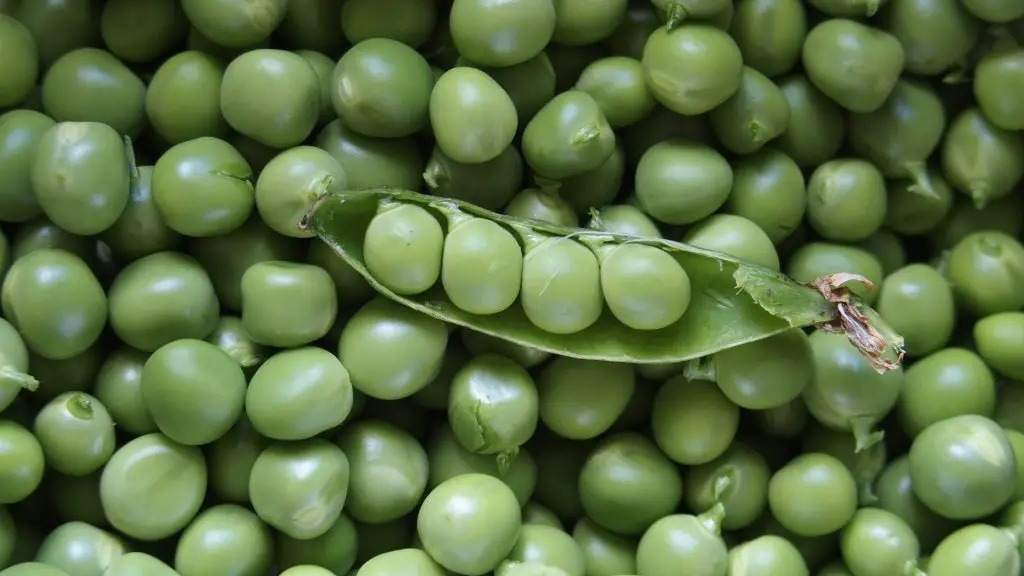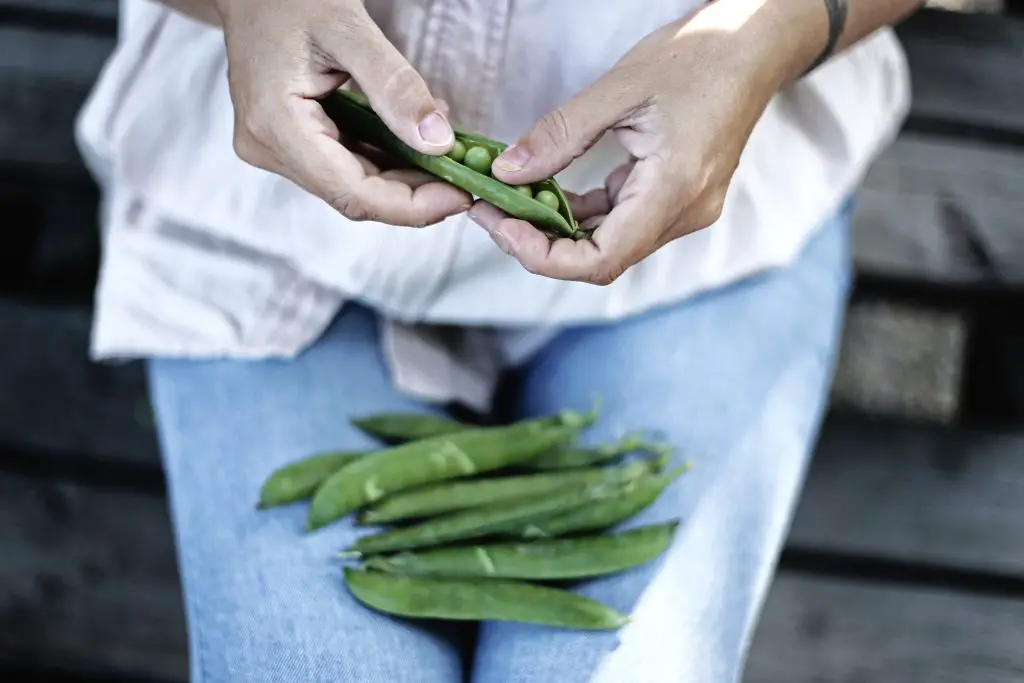How Many Peas Will One Plant Produce? Most people are familiar with bringing home a bag of frozen Peas from the grocery store. However, this culinary experience really doesn’t do justice to this vegetable. Homegrown Peas are an incredibly sweet and tender vegetable that tastes fantastic when eaten directly from the pod. The only way to enjoy this experience is to grow your own, so how much does one plant produce.
A single Pea plant will produce between 2 to 4 oz (57 to 114 grams) of Peas according to Clive Blazey’s book, The Australian Vegetable Garden. This equates to around 30 pods per plant. This means that between 20 to 30 plants should be planted per person at least.
Pea plants are generally easy to grow in most regions but having the plant cropping in the peak of summer in hot locations should be avoided. They are normally grown in Spring and Autumn in rows that require a supporting trellis.
Most varieties of Peas typically take between 60 to 70 days before the first harvests can be taken from the plant. As the Peas mature quickly once the flowers bloom it is a good idea to harvest Peas every few days. Constant picking of pods will encourage the formation of more pods.
The varieties recommended by Gardeners’ World are “Avola”, “Canoe”, “Capucijner”, “Kelvedon Wonder”, “Hurst Green Shaft” and “Terrain”, however the variety that I have personally had a good experience with is “Greenfeast”. If you live in the UK several of these varieties can be purchased from Thompson and Morgan. In the US try Seeds for Generations or St Clare seeds.

How To Grow Peas
As mentioned above Peas are generally a very easy crop to grow because they are quite hardy and are able to tolerate temperatures down to 28°F (-2°C) without any problem. At temperatures as low as 20°F (-6°C) Peas will still survive out in the open but will be damaged. If protection is provided to the plant, either using a Frost Blanket or Row Cover, Peas can, in some cases tolerate 10°F (-12°C). However, Peas grow best at temperatures between 50°F and 70°F (10°C to 21°C)
The relatively high degree of tolerance to cold enables Peas to be planted as late as early to mid-Autumn in some regions where the winters are mild. The advantage of planting at this time is it allows an early crop to be produced in the following Spring.
If you live in a region with cold winters the traditional time to plant Peas seeds is around the middle of Spring if you are sowing directly. However, this can be brought forward by a couple of weeks by sowing in seed trays which can be kept in a heated environment indoors alternatively a heated propagation tray may be used.
Heated propagation trays have the advantage that they allow the growing conditions to be better controlled. Additionally, they are relatively inexpensive to see the latest price on Amazon click here.
Pea seeds should be sown at a depth of 2 inches (5 cm), if you are planting in modular trays two seeds per cell are recommended. In seed trays, Peas will germinate relatively quickly and typically only need to spend 3 to 4 weeks in a tray before being planted out.
When planting the seedling out into the garden the plants should be spaced 2 to 3 inches (5 to 7cm) apart. The structure used to support the Peas should be erected at this time to avoid disturbing the roots later.
The method used to support Peas for most gardeners is a wire or plastic trellis strung between two garden stakes. However, despite the fact that Peas produce tendrils that cling to the support structure it is still necessary to tie them into the structure to ensure that they don’t flop over.
The easiest way to do this is to tie a string at one end and run a line between the posts. This will need to be done several times as the height of the plant increases. The alternative method is to dispense with the trellis altogether and simply run lines between posts at increasing heights. This method is a little less work and requires fewer materials.
To see a demonstration of this method watch the video below by Charles Dowding below. Charles is a professional market gardener with 30 years of experience and is the leading expert on “No Dig” gardening.
For soil preparation when planting we generally recommend using the ‘No Dig’ method advocated by Charles Dowding as it is extremely simple to implement and really reduces the volume of work required in the garden.
The method requires a layer of compost, 2 to 4 inches thick to be applied once a year to the beds, this is best done in Autumn. This layer provides all the nutrients required to the plants for the entire year which means there is no need to apply fertilizer. Additionally, the compost acts as a mulch suppressing weeds and retaining moisture. To read more about this method click here.
In addition to preparing the soil, it is important to ensure that it remains moist throughout the growing season. This is particularly important once the plant begins to flower because the Peas need additional moisture to ensure that they develop properly.
Harvesting Peas
Peas Pods that appear will initially be a flat 2-dimensional shape. As the pods approach the point of harvest they will begin to fatten to the point where they are clearly thicker than a pencil. At this point, it is advisable to select a pod or two and open them up and have a look to see if the peas themselves have reached a reasonable size which is similar to the size sold commercially. You will find that after looking at just a few pods you will quickly get a feel of when to harvest.
It is best to not allow the Peas to get too large as they can become tough. However, it is important to note that if the Peas become too large they are still very useful as they can be collected for seed for the following year.
Once the harvest begins it is important to ensure that the Peas are picked every few days as this will encourage the plant to continue to produce new flowers and pods. Pea plants will continue to produce as long as the temperatures remain moderate, between 50°F to 85°F (10°C to 26°C). At temperatures below 50°F, the vine will stop producing flowers and at temperatures above 80°F, the vine will die back.

Getting The Best From Your Harvest
Peas are at their absolute best when eaten directly from the pod, fresh. However, as soon as the Peas are picked the sugar present in them starts to be converted starch which progressively reduces the quality of the flavour. As such it is best to cook or freeze peas within a few hours of picking. When freezing them it is important to blanch them to help retain the texture, colour and flavour.
If you are unfamiliar with how to blanch, the steps are provided below;
- Step 1: Remove the Peas from their pods and wash.
- Step 2: Blanch the Peas by bringing a large pot of water to boil. Fill a large bowl with ice water, just prior to starting the blanching process. Once the pot is boiling, add your Peas into the water and cook for 1 minute, then remove the Peas from the pot and immediately plunge them into the ice water to cool to stop the cooking process.
- Step 3: Drain the Peas and then Freeze. To avoid the Peas clumping together freeze them on a tray before packing them into resealable plastic bags. Ensure each bag is labeled with dates.
